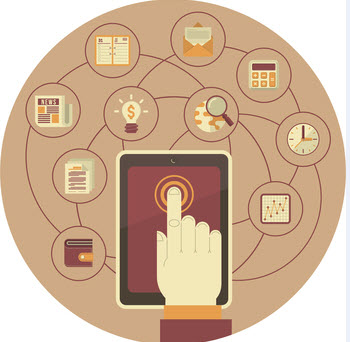If these mobile gadgets ware going to be as popular as predicted, they will soon be in the workplace.
Wearable technology is moving ahead with leaps and bounds as smartwatches and other types of devices that can be worn on the body make their way onto the market shelves and are being scooped up by consumers.
It won’t take long before workplaces will need to come up with policies to manage their use.
Whether in the form of smartwatches, wristbands, pendants, belt clips, or even glasses, wearable technology is starting to become popular and the industry is predicting that it will be mainstream sooner rather than later. At a time in which businesses are only just starting to be able to come up with the right kinds of policies to safely implement bring your own device (BYOD) programs, a whole new form of mobile tech is now making its way into the space.
Wearable technology is different because it isn’t always clear what it is or when it’s on.
Now that Google has announced its Android Wear operating system for wearables, it is likely that the number of manufacturers will start to jump into the mix and base their gadgets on this OS. These devices will be piled on top of the large number that are already in existence, including Google Glass, Samsung Gear , Pebble, and others, as well as a range of different types of jewelry such as rings and pendants, and fitness bands that also come in a spectrum of shapes and brands.
Depending on the wearable technology, the gadget could provide biometrics, internet access, or smartphone access, among other features. While workplaces will need to keep additional distractions in mind to keep employees focused on their tasks, this will be more challenging than it is with smartphones because it is difficult to recognize some forms of wearables and it is exceptionally hard to know when they are active. This means that it is possible that texts could be sent, recordings could be made, or the net could be surfed without any outward signs that it is occurring.
Next, there is also an issue of security. Mobile security is already a major concern for companies with a BYOD program, and many find it to be a considerable challenge to enforce the policies when they do have them. Connected wearables adds an entirely new layer of tech and of risk that needs to be considered and protected.
Adopting ‘Bring Your Own Device’ (BYOD) policies has proven to be effective in increasing employee productivity in most workplaces and it also saves employers money by releasing them from the responsibility of buying hundreds or thousands of company-issued devices. For this reason, it is expected that more than half of U.S. employers will adopt BYOD by 2017, according to Gartner. Trying to keep mobile devices out of the workplace today is like trying to keep ants away from a picnic — it can’t be done. Companies have to either find a way to work with people using their mobile devices for work purposes, or consent to knowing employees are using their devices anyway, and presenting a huge security risk. However, security can be managed, and managed well. Many companies, such as IBM, are already doing it. Here are three ways companies can balance the risks and the rewards when it comes to BYOD security at work.
1. Manage the Risk of Lost or Stolen Devices
According to Cisco Systems, lost or stolen devices are one of the biggest BYOD risks. A device used for work can compromise an entire company or organization if it’s lost or stolen and has sensitive work data on it. BYOD program managers should install GPS tracking on all devices. This will let them know the location of a lost or stolen device. Managers must also be given remote access that will allow them to wipe the hard drives clean in case of theft as this is the only way to ensure company information is kept secure.
2. Keep a Company-Wide Device Policy
There should always be a policy in place that lets employees know the types of devices sanctioned for work purposes. Some companies prefer only one type of device, as this is often easier on IT departments. For many companies, this means Blackberry. Blackberry is known for its exceptional security features, and the company even has an entire service that allows companies to easily manage iOS, Android and Blackberry platforms, if you don’t want to limit your employees.
3. Require Certain Programs and Prohibit Others
Protecting sensitive company data from hackers is essential. For this reason, most employers with BYOD programs require their employees to either download a company-sanctioned security software like McAfee or Norton, or a proprietary company security program, according to Tech Republic. Likewise, some programs and apps are just too full of potential security holes to be allowed. For example, most employers prefer that employees keep social media apps, such as the questionable Facebook Home app, off of their mobile devices, according to CSO. It is too easy for unapproved apps to allow hackers a back door into the device. However, logging in to social media through the site itself on the device’s web browser is typically acceptable as long as anti-virus and anti-spyware software is installed first.
Dana Hudson
Dana is a New York native and small business consultant with a penchant for social media strategy.



